
# 1199 - 1962 4c Girl Scouts
Birth Of The Girl Scouts Of The United States Of America

On March 12, 1912, Juliette “Daisy” Gordon Low held the first meeting of the Girl Guides, the forerunner of the Girl Scouts of the United States of America.
Scouting groups were first started in England in 1907, when Lord Robert Baden-Powell began the Boy Scouts movement. When girls became interested in belonging to a similar group, he helped his sister Agnes Baden-Powell organize the Girl Guides program. Scouting quickly spread to other countries.
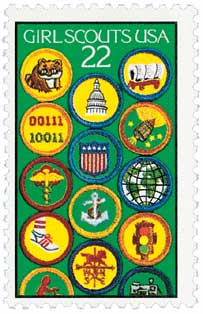
A British Boy Scout helped American businessman William D. Boyce find his way in London’s fog. When the boy refused his tip, telling him he was merely doing his “good turn” for the day, it left an impression on him. So Boyce then worked with others to found the Boy Scouts of America in 1910. The Handbook for Boys was published that same year. Some of the Scouts’ early contributions to their communities and their country were made to support Americans during World War I.
Juliette Gordon Low was a member of a prominent family in Georgia. Following the death of her husband, Low traveled to Europe in 1911 and met Sir Robert Baden-Powell and his sister Agnes. Low had long dreamed of an organization that would get girls out of their houses to experience the outdoors, while learning important skills to make them self-reliant and resourceful.
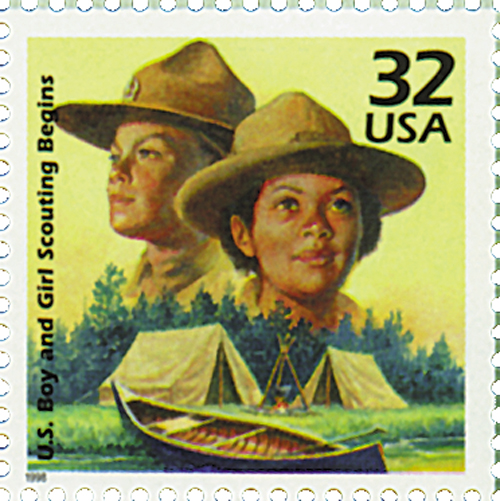
That August, Low began working with Agnes and the Girl Guides, and eventually formed a Girl Guides patrol near her home in Scotland. She taught the girls how to spin wool, care for livestock, tie knots, and read maps. She also taught them knitting, cooking, and first aid. Additionally, she had her military friends teach them about drilling, signaling, and camping.
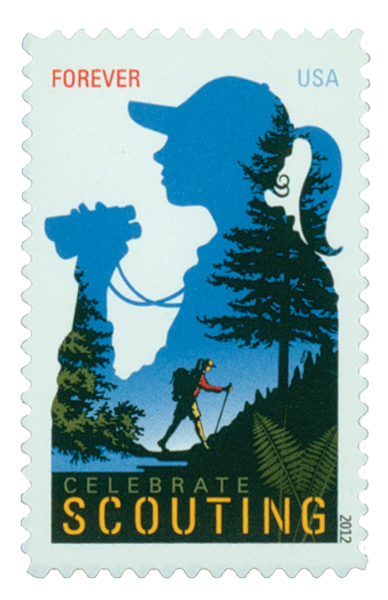
In early 1912, Low brought Baden-Powell back to America to expand the scouting movement. When she returned home to Savannah, Georgia, Low called her cousin with exciting news. “I’ve got something for the girls of Savannah, and all of America, and all the world, and we’re going to start it tonight!”
That something was the “Girl Guides.” And she held the first-ever meeting of the Girl Guides of America on March 12, 1912, in Savannah, Georgia. (The name was changed to the Girl Scouts the following year.)
The first registered member of the American Girl Guides was Margaret Gordon, Juliette’s niece. Low’s first Girl Scout meeting included 18 girls, but by the next meeting there were 108 girls enrolled. By 1915 the organization had grown to include 5,000 girls. Because of the quickly growing numbers of girls, the organization was divided into three groups according to age. Today, there are even more groups. These levels are “Daisies” for the youngest girls (5-7 years old), “Brownies” (7-9), “Juniors” (9-11), “Cadettes” (11-14), “Seniors” (14-16), and finally “Ambassadors” (16-18).
Low was so committed to Girl Scouts, she sold her pearls to help support it. Later, 25¢ national dues were adopted to help support the organization.
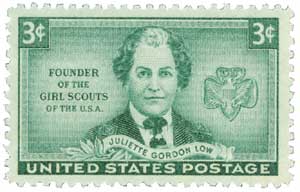
During World War II, Boy and Girl Scouts were actively involved in selling U.S. Defense Bonds, growing Victory gardens, and collecting waste fats (to make ammunition) and scrap metals. In addition, they learned a wide variety of skills while earning badges.
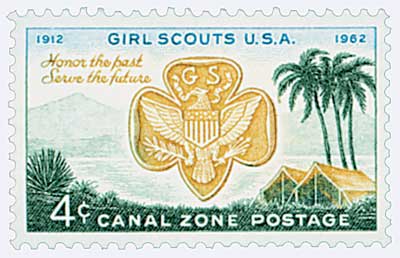
Over the next 100 years, the Girl Scouts of the United States of America instilled values such as honesty, courage, community service, and citizenship to over 50 million young women. In 1994, the group was named the eighth most popular charity or non-profit in America, with 41% of Americans polled saying they “loved” the Girl Scouts or “liked them a lot.”
Birth Of The Girl Scouts Of The United States Of America

On March 12, 1912, Juliette “Daisy” Gordon Low held the first meeting of the Girl Guides, the forerunner of the Girl Scouts of the United States of America.
Scouting groups were first started in England in 1907, when Lord Robert Baden-Powell began the Boy Scouts movement. When girls became interested in belonging to a similar group, he helped his sister Agnes Baden-Powell organize the Girl Guides program. Scouting quickly spread to other countries.

A British Boy Scout helped American businessman William D. Boyce find his way in London’s fog. When the boy refused his tip, telling him he was merely doing his “good turn” for the day, it left an impression on him. So Boyce then worked with others to found the Boy Scouts of America in 1910. The Handbook for Boys was published that same year. Some of the Scouts’ early contributions to their communities and their country were made to support Americans during World War I.
Juliette Gordon Low was a member of a prominent family in Georgia. Following the death of her husband, Low traveled to Europe in 1911 and met Sir Robert Baden-Powell and his sister Agnes. Low had long dreamed of an organization that would get girls out of their houses to experience the outdoors, while learning important skills to make them self-reliant and resourceful.

That August, Low began working with Agnes and the Girl Guides, and eventually formed a Girl Guides patrol near her home in Scotland. She taught the girls how to spin wool, care for livestock, tie knots, and read maps. She also taught them knitting, cooking, and first aid. Additionally, she had her military friends teach them about drilling, signaling, and camping.

In early 1912, Low brought Baden-Powell back to America to expand the scouting movement. When she returned home to Savannah, Georgia, Low called her cousin with exciting news. “I’ve got something for the girls of Savannah, and all of America, and all the world, and we’re going to start it tonight!”
That something was the “Girl Guides.” And she held the first-ever meeting of the Girl Guides of America on March 12, 1912, in Savannah, Georgia. (The name was changed to the Girl Scouts the following year.)
The first registered member of the American Girl Guides was Margaret Gordon, Juliette’s niece. Low’s first Girl Scout meeting included 18 girls, but by the next meeting there were 108 girls enrolled. By 1915 the organization had grown to include 5,000 girls. Because of the quickly growing numbers of girls, the organization was divided into three groups according to age. Today, there are even more groups. These levels are “Daisies” for the youngest girls (5-7 years old), “Brownies” (7-9), “Juniors” (9-11), “Cadettes” (11-14), “Seniors” (14-16), and finally “Ambassadors” (16-18).
Low was so committed to Girl Scouts, she sold her pearls to help support it. Later, 25¢ national dues were adopted to help support the organization.

During World War II, Boy and Girl Scouts were actively involved in selling U.S. Defense Bonds, growing Victory gardens, and collecting waste fats (to make ammunition) and scrap metals. In addition, they learned a wide variety of skills while earning badges.

Over the next 100 years, the Girl Scouts of the United States of America instilled values such as honesty, courage, community service, and citizenship to over 50 million young women. In 1994, the group was named the eighth most popular charity or non-profit in America, with 41% of Americans polled saying they “loved” the Girl Scouts or “liked them a lot.”











